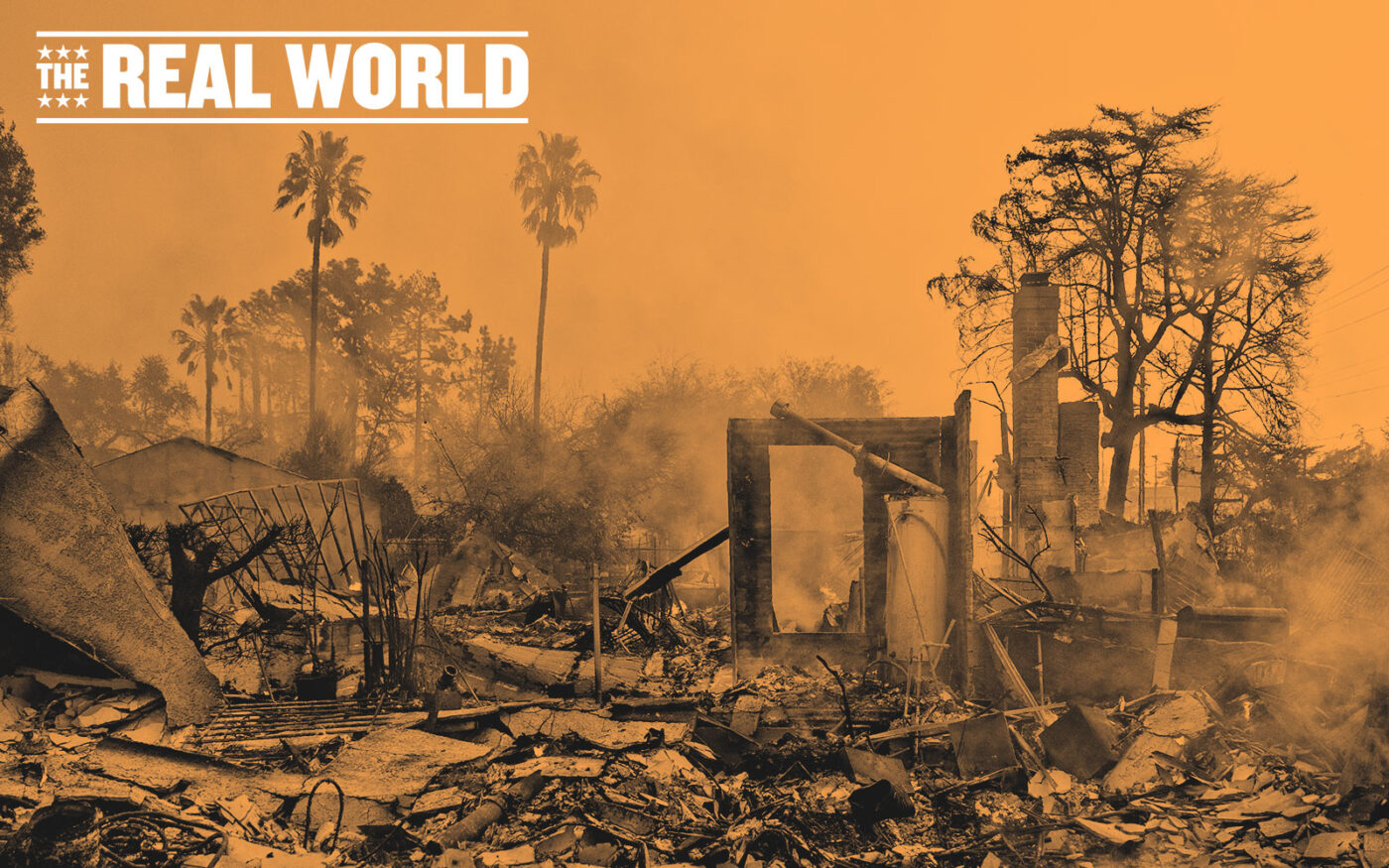An assassin in the Netflix series “Black Doves” tells friends he works in insurance because he knows they won’t want to talk about it.
It’s time to rewrite the script. Insurance is no longer the most boring topic in real estate. It might even be the scariest.
The California fires are just the latest emergency for the insurance industry, which has been coping with increasing losses from natural disasters fueled by global warming. Global losses from natural catastrophes were $166 billion in 2019, $210 billion in 2020 and $380 billion in 2023, according to the Insurance Information Institute.

Last year was even worse, with the steepest losses since the calamitous year of 2017, according to insurance giant Munich Re. Insured losses have been rising proportionally.
Just as financially ruinous have been thunderstorms, wildfires and other lesser events, known as non-peak perils. Severe thunderstorms in the U.S. last year caused $57 billion in losses, of which $41 billion was insured — the second-worst totals ever, after 2023’s $66 billion and $51 billion, respectively.
The impact on real estate is huge. Insurance is to property like oxygen is to blood. Just try to get a mortgage without it. Homebuyers in California, where the insurance market was in terrible shape even before the latest blazes, can now back out of a contract if they cannot secure a policy. In the Bronx — not known for wildfires or hurricanes — some multifamily premiums have doubled in the past five years, pushing owners toward foreclosure.
“One record-breaking high after another,” Thomas Blunck of Munich Re said in a statement. “The consequences are devastating. The destructive forces of climate change are becoming increasingly evident.”
Whatever their position on climate change is, property owners face rising costs and declining availability of insurance. When insurers’ risks increase, they raise premiums — or worse, stop writing policies.

Insurers have been fleeing fire-prone California and storm-prone Florida, among other places. Long Island, despite largely being spared in recent years from Caribbean-born hurricanes, is in the midst of an insurance crisis. “It’s the worst market I’ve ever seen,” a 47-year veteran of the industry based in Babylon told Newsday.
If insurers refuse to cover a market, the government sometimes steps in, as it did for nuclear plants in 1957, flood-prone properties in 1968, skyscrapers after 9/11, and California after the 1994 Northridge earthquake. California also created a program called FAIR for homeowners in areas where insurers don’t offer standard fire policies.
But government intervention can take years, and the interim can be chaotic. And public insurance has its own problems, as observers of the National Flood Insurance Program have documented. By encouraging people to move to or remain in flood-prone areas, it has teed up even more devastating losses.
“For people who live along coastlines, rivers, or other waterways, this is a very real threat. Storm surges have the power to destroy homes and upend lives,” the Natural Resources Defense Council warned. “And for people who live in urban areas, even those far away from rivers or oceans, flooding from overburdened storm sewer systems is also disastrous.”
Tropical Storm Ida, which in 2021 drowned 11 New Yorkers in basement apartments, was one such example. It did $24 billion worth of damage in the Northeast.

JPMorgan estimates the California fires’ total will reach $20 billion.
“These events will continue to have widespread, negative impacts for the state’s broader insurance market,” Denise Rappmund, a senior analyst at Moody’s, told Reuters. “Increased recovery costs will likely drive up premiums and may reduce property insurance availability.”
That seems like a given, as does ballooning risk and costs for California’s FAIR program. Known as the state’s fire insurer of last resort, the high-risk pool has nearly tripled in size since 2018.
“The numbers are frightening,” Mark Sektnan, vice president in California for the American Property Casualty Insurance Association, told the Sacramento Business Journal in July. “Everyone should be scared.”
Read more



